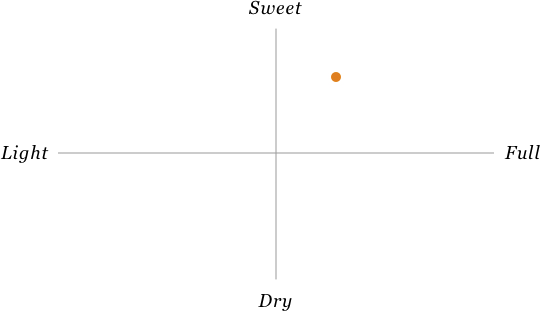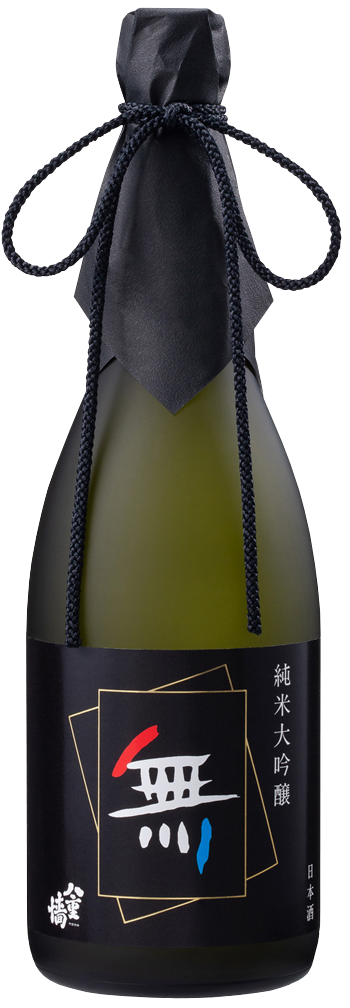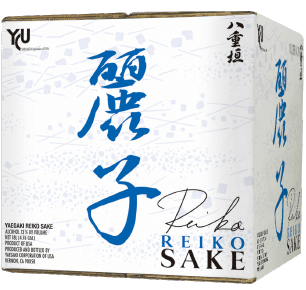
Yaegaki Select
Junmai Ginjo ![]()
Brewed from 100% Omachi rice, this Junmai Ginjo is fruity on the nose with the aroma of raisin and the gentle flavor of muscat grapes.
Brewed inHimeji, Japan
Volume720ml
ClassJunmai Ginjo
ABV16%
Drinking TemperatureChilled
Polishing Rate60%
Food PairingEnjoy this intricate sake as an aperitif or with light and rich flavored foods to delight your senses.






Mu Junmai Daiginjo ![]()
This fruity, dry Junmai Daiginjo has a delicate and brilliantly aromatic character. The aroma of green apples and Asian pear with a hint of resin complements its smooth and refreshing taste.
Brewed inHimeji, Japan
Volume300ml,720ml
ClassJunmai Daiginjo
RiceYamada Nishiki, Gohyakumangoku
ABV15%
Drinking TemperatureChilled
Polishing Rate50%
Food PairingBy itself or with meals with lighter flavors, such as vinegar-based salad, white fish (sashimi, sushi, or grilled), fish carpaccio, chicken tenders, and fruits.





- Column: What does “Mu” mean?
- In Japanese, the word mu (無) literally means “nothingness.” Why was such a name given to this sake? Mu was a brand produced in celebration of Yaegaki’s 320th anniversary, back in 1986. It was a time when more and more machinery was being incorporated into sake-making and technology was taking over ever more of the work done by human hands. Yaegaki, however, resisted this trend and concentrated on the traditional handcraftsmanship of sake brewing. This return to the basics-to “nothingness”-is the spirit that lives in our Mu Sake.

Mu Black Label ![]()
This top-quality Junmai Daiginjo, painstakingly brewed from 100% Yamada Nishiki-the most renowned brewing rice-has a perfect mixture of elegant apple- and sherry-like aromas. The rich and sophisticated taste of sweet and acidic will satisfy your palate.
Brewed inHimeji, Japan
Volume720ml
ClassJunmai Daiginjo
RiceYamada Nishiki
ABV16%
Drinking TemperatureChilled
Polishing Rate40%
Food PairingBy itself or together with meals with lighter flavors.





- Column: What is the difference between “Mu” and “Mu Black Label”?
- “Mu” and “Mu Black Label” are both classified as Junmai Daiginjo, but they differ in taste and character.
“Mu” uses two types of rice – Yamada Nishiki and Gohyaku Mangoku – whereas “Mu Black Label” uses just the Yamada Nishiki. Furthermore, the polishing rate of the rice for “Mu” is 50%, while that of “Mu Black Label” is reduced to 40%. These two differences are what characterize these two types of sake – “Mu,” a fruity but crisp-finish sake (which is a trait that derives from the balance of Yamada Nishiki and Gohyaku Mangoku), and “Mu Black Label,” a sake with a more sophisticated, rounder aroma and taste (which derive from the Yamada Nishiki).

Kurobin Junmai![]()
This well-rounded sake has a sherry-like flavor and clear sweetness drawn from koji and rice. Its rich, dry taste is complemented by a hint of spice. This junmai sake can be enjoyed with a variety of foods.
Brewed inHimeji, Japan
Volume300ml, 720ml
ClassJunmai
ABV14.1-14.9%
Drinking TemperatureChilled, Room Temperature, Medium Hot
Polishing Rate65%
Food PairingFoods with rich flavors, such as yakitori, roasted chicken, seafood pasta, seared fish, and sautéed vegetables.






Yaegaki Sake Junmai ![]()
Yaegaki Sake Junmai represents the top of Yaegaki’s domestic sake line. It is a dry, medium-bodied sake with a crisp acidic finish that can be referred to as “food friendly.” It can be drank either warm or cold, and complements any Asian cuisines.
Brewed inCalifornia
Volume300ml, 750ml, 1.5L, 18L [18L for restaurants only]
ClassJunmai
ABV15%
Drinking TemperatureChilled, Room Temperature, Medium Hot
Food PairingBy itself or with meals with lighter flavors, foods with rich flavors, mainly Asian cuisines, but also with Western dishes as well.






Yaegaki Draft Sake![]()
Yaegaki Draft Sake is a cold draft sake, classified as namachozo-shu (fresh stored sake). Its unmatched natural freshness and subtle sweetness is what makes it a perfect pair with fresh fish and other lighter foods.
Brewed inCalifornia
Volume300ml
ClassJunmai Draft (Namachozo)
ABV16%
Drinking TemperatureChilled
Food PairingWith meals with lighter flavors using fish and vegetables, as well as some lighter meat dishes.





- Column: What is Draft Sake?
- Sake is usually pasteurized twice through its brewing process—once before storage and once again before bottling. But some sake—referred to in the U.S. as draft sake—skip this pasteurization process to give the sake a more refreshing taste. Nama-zake (fresh sake) skips both steps of pasteurization; namachozo-shu (fresh stored sake) skips the pasteurization step before storage; and manazume-shu (fresh bottled sake) skips the pasteurization step before bottling.

Yaegaki Cloud Nigori Sake![]()
Yaegaki Cloud Nigori has a refreshing and milky smooth texture that is quite unlike any other nigori. With a fresh sweetness that is not too cloying, it pairs perfectly with food that has fuller or spicy flavors. This California local premium nigori is best enjoyed chilled.
Brewed inCalifornia
Volume300ml
ClassJunmai Nigori
ABV15%
Drinking TemperatureChilled
Food PairingFuller flavored foods, such as yakitori, sukiyaki, and also ethnic spicy foods.





- Column: What does the bottle design represent?
- The pink circles on the bottle represent the kind of nigori the Yaegaki Cloud is—a great balance of mild sweetness and acidity, expressed in the light pink color, as well as a round, smooth texture, expressed in the intertwined circles.

California Ki-Ippon ![]()
The classic taste of California Ki-Ippon Dry Sake derives from the best U.S. ingredients combined with time-honored Japanese tradition. This rather dry sake can be served either hot or cold and is a food-friendly sake that makes the perfect match for any food or occasion.
Brewed inCalifornia
Volume750ml, 1.5L, 18L [18L for restaurants only]
ClassJunmai
ABV15%
Drinking TemperatureChilled, Room Temperature, Medium Hot
Food PairingFoods with rich flavors, mainly Asian cuisines, but also with Western dishes as well.





- Column: What does Ki-Ippon mean?
- Ki-Ippon (生一本) was originally a term used to describe junmai sake brewed at a single manufacturing site. In bygone times, it was common for bigger sake manufacturers to buy sake from smaller breweries and bottle it under their own brand name. As a result, sake made and bottled at a single manufacturing site, known as ki-ippon sake, was considered special.

Reiko Sake![]()
Reiko Sake is named after Reiko Kushibiki, the first female Sake Master in the U.S. This authentic sake has a dry, light aroma and taste, making it enjoyable at any temperature. A food-friendly sake that matches a wide variety of meals.
Brewed inCalifornia
Volume18L [for restaurants only]
ClassJunmai
ABV13%
Drinking Temperature Chilled, Room Temperature, Medium Hot
Food PairingFoods with rich flavors, mainly Asian cuisines, but also with Western dishes as well.






Yaegaki Mirin![]()
Yaegaki Mirin is the perfect liquid condiment for adding a sweet flavor to sauces and glazes. It tones down the strong smell of fresh fish or meat when used as a marinade, and it can also help ingredients absorb more flavors when simmered or stewed. For Asian cuisines, it can be used for teriyaki and BBQ sauces to add a nice glaze, and when cooking Western food sauces, it is a great substitute for sherry or white wine with sugar.
Made inCalifornia
Volume375ml, 750ml, 18L [18L for restaurants only]
Classnon-beverage product
(cooking condiment)
ABV8%

